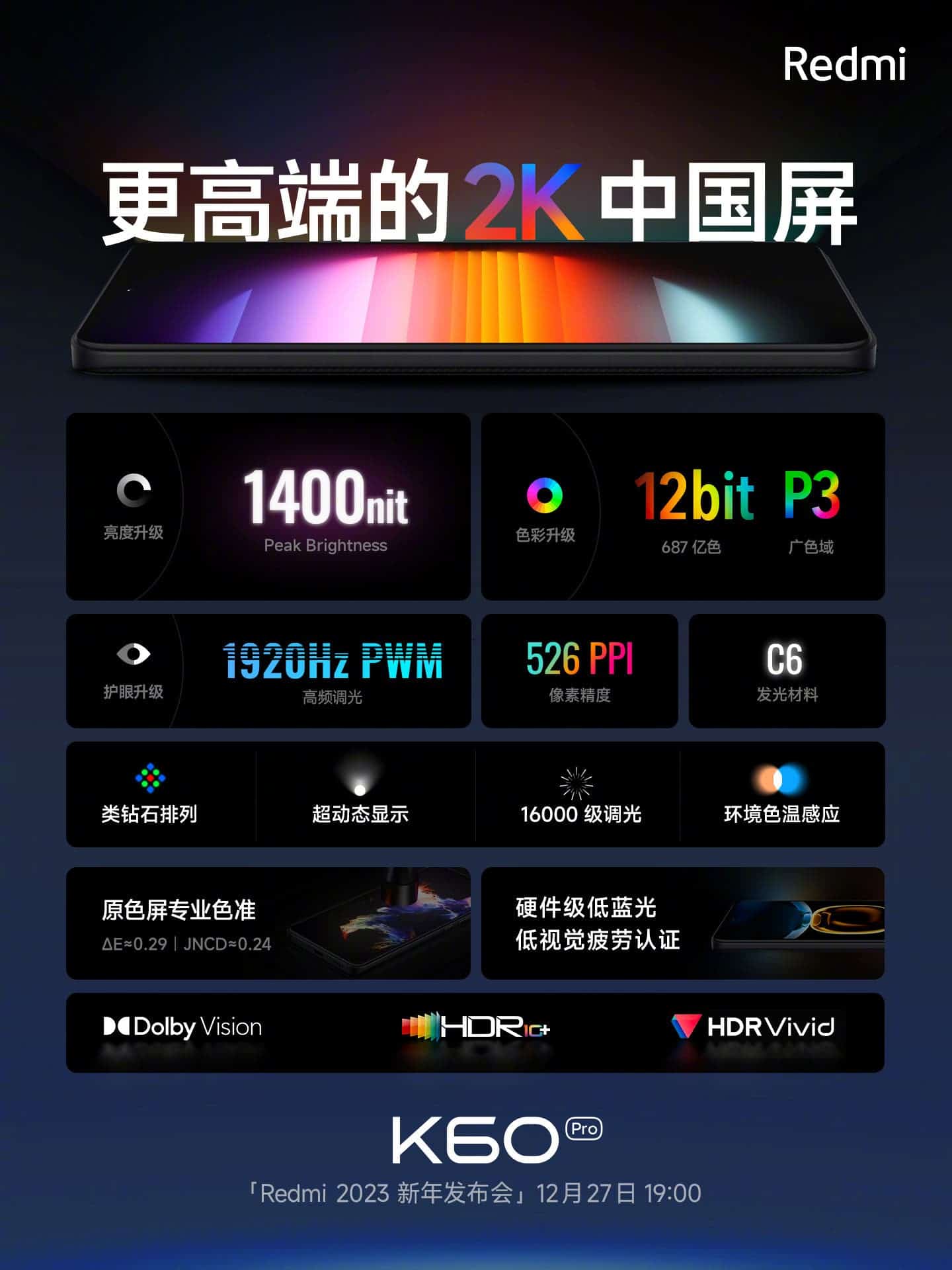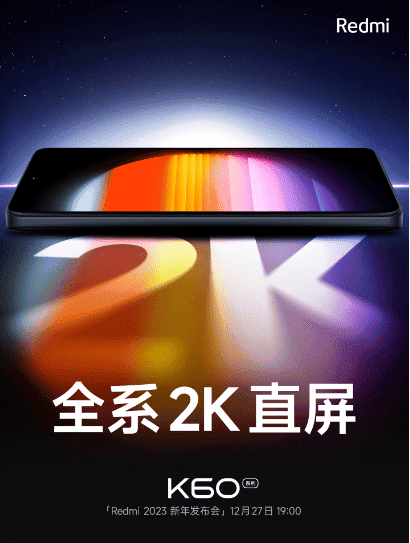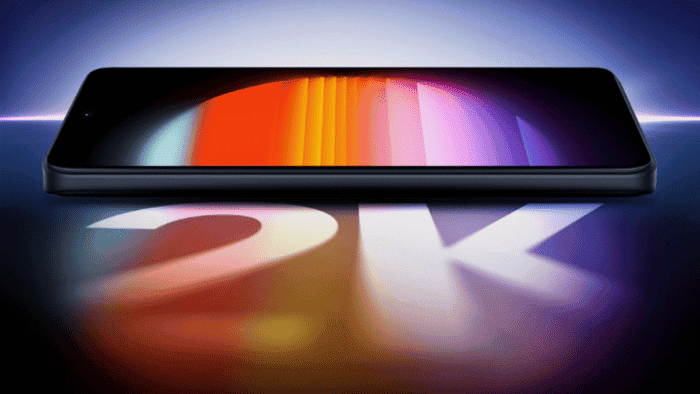Chinese brand, Xiaomi, has since announced that the Redmi 2023 New Year Conference will be held at 19:00 on December 27th. At the event, the company will officially announce the Redmi K60 series. According to reports, the entire Redmi K60 series will come with a “2K direct screen” this time. However, the Redmi K60 Pro will use a 2K high-quality direct screen. Recently, the screen details of the Redmi K60 series leaked. Below are some of the details of the display of this series
- Brightness upgrade: 1400nit high-light peak brightness;
- Color upgrade: 12bit / 68.7 billion colors, full link P3 wide color gamut;
- Eye protection upgrade: 1920Hz PWM dimming, hardware-level low blue light.

In other respects, this screen will also use C6 luminescent material. It will have a color accuracy of ΔE≈0.29, JNCD≈0.24, and support hardware-level low blue light. This display is also certified for low visual fatigue. In addition, Redmi K60 also has features such as ambient color temperature display, 16,000-level dimming, primary color screen, Dolby Vision, ultra-dynamic display, HDR10+, and HDR Vivid.
Redmi K60 series will upgrade 2K displays
Lu Weibing, general manager of Redmi said that the Redmi K60 will not only popularize 2K but also upgrade it. It will use a high end 2K Chinese screens to upgrade the display experience. The company also seeks to promote the use of high end Chinese screens.

According to reports, Redmi and Huaxing established a joint innovation lab for screen hardware design. This lab is developing display algorithm architecture for platform-level display optimization, and production yield climb, etc.
There are bottlenecks in the core 2K tech and they lie in the sharp increase in the number of pixels. This puts forward extremely high requirements for the design and manufacture of the underlying circuit. The thinnest metal wire on this screen is only 1.5um, and the precision error of evaporation is required to be smaller than 1/10 of the diameter of a hair. The whole display project of K60 lasted more than 700 days, after more than 60 design verifications and more than 10,000 pieces of debugging.





